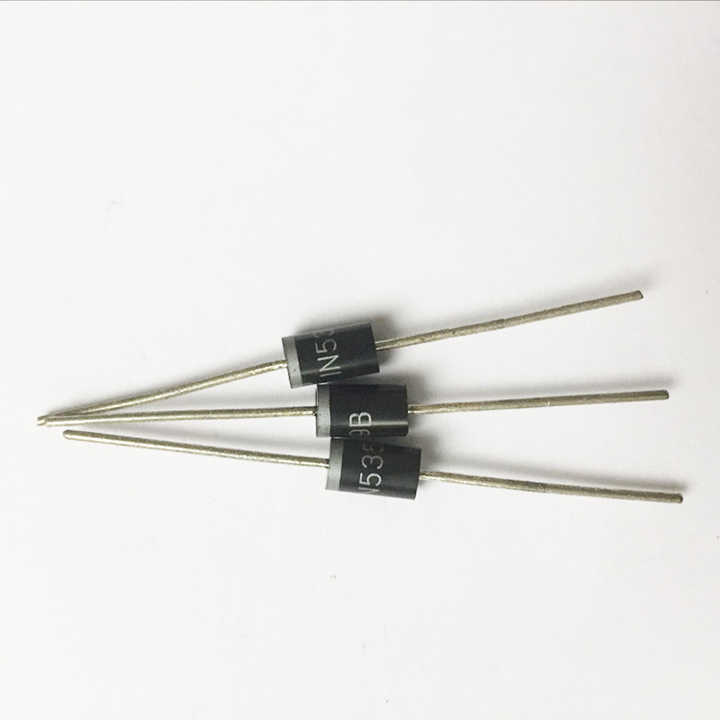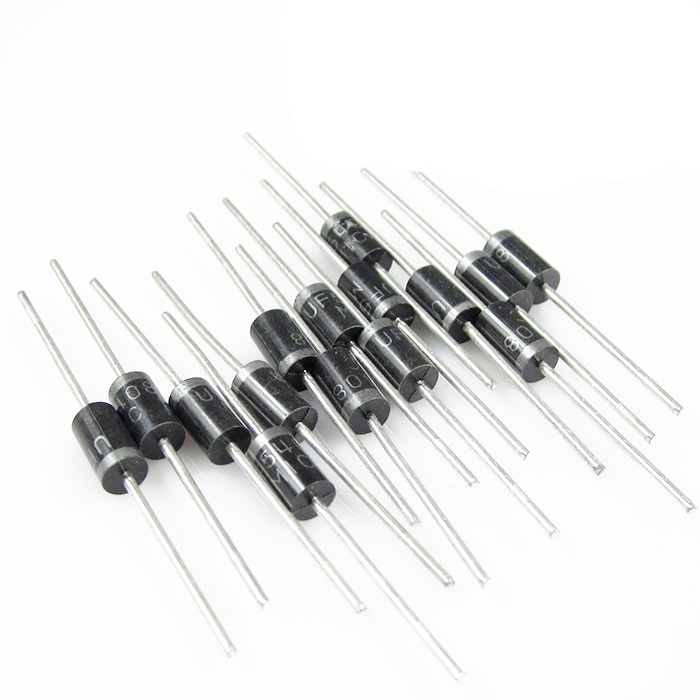Introduction
When it comes to electronic components, one of the most versatile and widely used is the diode. Diodes are simple, yet essential devices that play a crucial role in a wide range of electronic applications. From rectifying AC signals to voltage regulation, diodes have numerous uses in various industries. In this comprehensive guide, we will explore the different ways of diodes uses, and their importance in modern technology.
Part 1: Understanding Diodes
At the most basic level, a diode is a two-terminal semiconductor device that allows current to flow in only one direction. This means that it acts as a one-way valve for electrical current. Allowing it to pass through in one direction while blocking it in the opposite direction. There are several types of diodes, including the popular PN junction diode, Zener diode, and light-emitting diode (LED). Each type of diode is designed for specific functions. It has unique characteristics that make it well-suited for different applications.
Level 1: The PN junction diode is the most commonly used diode and is made from a single piece of semiconductor material. It consists of a P-type semiconductor and an N-type semiconductor that are joined together to form a PN junction. When a forward bias voltage is applied across the diode, it allows current to flow. While a reverse bias voltage blocks the current.
Level 2: Zener diodes are designed to operate in the breakdown region. They conduct in the reverse direction at a specific voltage level. This makes them ideal for voltage regulation and protection against voltage spikes. Meanwhile, LEDs are used for their ability to emit light when current passes through them. And making them essential for lighting applications and displays.
Part 2: Rectification
One of the primary diode uses is in rectifying AC signals to produce DC output. This is using a diode bridge rectifier. It converts the alternating current from a power source into a pulsating DC current. The rectified output can provide a clean and steady DC voltage for various electronic devices.
Level 1: The diode bridge rectifier consists of four diodes arranged in a specific configuration to allow the current to flow in only one direction. During the positive half-cycle of the input AC signal, diodes D1 and D3 conduct, while diodes D2 and D4 are reverse-biased. During the negative half-cycle, the roles of the diodes are reversed. Resulting in a unidirectional flow of current through the load.
Level 2: Rectification is essential for converting the AC power from the electric grid or other sources into a form that can be used by electronic devices. It is commonly used in power supplies for consumer electronics, industrial equipment, and computer systems. Providing a stable DC voltage for efficient operation.
Part 3: Voltage Regulation
Diodes for voltage regulation in electronic circuits. Zener diodes, in particular, are designed to operate in the breakdown region and can maintain a constant voltage across its terminals, regardless of the current flowing through it. This makes them ideal for stabilizing voltages and protecting sensitive components from voltage spikes.
Level 1: Zener diodes in voltage regulation circuits provide a constant output voltage, even as the input voltage fluctuates. When the input voltage exceeds the Zener voltage, the diode starts to conduct and maintains a nearly constant voltage across its terminals.
Level 2: Voltage regulation is crucial for ensuring the proper operation of electronic circuits and protecting them from damage due to overvoltage conditions. Zener diodes in voltage regulators, voltage reference circuits, and overvoltage protection devices in a wide range of applications. Including power supplies, automotive electronics, and telecommunications equipment.
Part 4: Signal Demodulation and Detection
In communication systems, diodes are suitable for signal demodulation and detection, converting modulated signals back to their original form. This is achieved using diode detectors, which rectify the modulated RF signals to recover the original baseband signal. This is essential for various wireless communication technologies, including AM and FM radio, as well as radar and wireless data transmission.
Level 1: The diode detector circuit consists of a diode and a capacitor in parallel, with a load resistor connected across the capacitor. The diode rectifies the signal, stripping away the RF carrier frequency and leaving behind the original baseband signal. The capacitor helps to smooth out the rectified waveform, and the load resistor provides the recovered signal to the output.
Level 2: Diode detectors in radio receivers, radar systems, and other communication devices can extract the audio or data signal from the modulated RF carrier. This process is critical for receiving, demodulating, and decoding various types of wireless signals. Enabling us to listen to radio broadcasts, receive wireless data, and communicate over long distances.
Part 5: Light Emission
One of the most recognizable uses of diodes is in light-emitting diodes (LEDs), LEDs are semiconductor devices in a wide range of applications. Including lighting, signage, automotive lighting, and electronic displays.
Level 1: LEDs from semiconductor materials that emit photons (light) when electrons recombine with holes in the material. When electrons across the PN junction, and as they recombine with holes, they release energy in the form of light.
Level 2: The energy-efficient and long-lasting nature of LEDs has made them the preferred choice for lighting in homes, offices, and public spaces, as well as in automotive and electronic displays. LEDs offer the ability to produce a wide range of colors. And making them highly versatile for various applications.
Part 6: Diode Uses in Transmission and Communication
Diodes play a crucial role in transmission and communication systems. They are also essential components in the transmission of digital and analog signals through cables, fiber optics, and wireless communication systems. Diodes help in the conversion of signals from one form to another, ensuring efficient transmission and reception of data. Additionally, diodes are crucial in signal processing circuits. And enabling the smooth and accurate transfer of information.
Part 7: Diode Uses in Power Supplies and Voltage Regulation
Diodes are suitable in power supply and voltage regulation applications. Power supply circuits incorporate diodes to convert alternating current (AC) to direct current (DC). It is essential for powering electronic devices. They also prevent the flow of reverse current, thus providing a steady and regulated DC output. Additionally, diodes in voltage regulation circuits maintain a constant voltage level and protect electronic devices from voltage fluctuations. Zener diodes, in particular, for voltage regulation by maintaining a fixed output voltage across a wide range of load currents. Making them essential in various power supply and voltage regulation applications.
Part 8: Diode Uses in Lighting and Display Technologies
Diodes have revolutionized lighting and display technologies with the introduction of light-emitting diodes (LEDs). LEDs have become increasingly popular in various applications, including automotive lighting, signage, consumer electronics, and general illumination. LEDs are highly efficient, long-lasting, and environmentally friendly. Making them a preferred choice for energy-efficient lighting solutions. Diodes are also in liquid crystal displays (LCDs) and organic light-emitting diode (OLED) displays. In addition, diodes are protection against electrical surges. Ensuring the reliable and stable operation of display technologies. As the demand for energy-efficient lighting and advanced display technologies continues to grow. The role of diodes in these applications is becoming increasingly significant.
Conclusion
Diodes are essential components in modern technology, with a wide range of uses in rectification, voltage regulation, signal demodulation, and light emission. Understanding the different types of diodes and their applications is crucial for engineers, hobbyists, and anyone with an interest in electronics. As technology continues to advance, the role of diodes in electronic devices and systems will remain crucial. Making them an integral part of our everyday lives.












